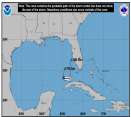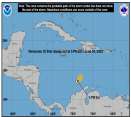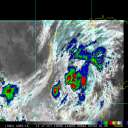This probably belongs in the other thread you started, but I just wanted to note on your comment, "That's why I take issue with the papers coming out attributing 2005's season to SSTs and anthropogenic global warming, suggesting warmer waters in the tropical Atlantic (10-20N) led to the record number of storms." Actually, both sides claim that warmer SSTs are responsible, and that the warmer SSTs do cause a set of associated atmospheric conditions that contribute to hurricane activity. NOAA's hurricane forecast is very specific about this:
"The regional atmospheric circulation contributing to these long-period fluctuations in hurricane activity is strongly linked to the tropics-wide multi-decadal signal"
and they have a slide showing all of the associated atmospheric conditions that are generated by warm SSTs, in the same way that ENSO effects upper level winds over the ATL.
However, NOAA and William Gray say the warm SSTs are only due to the AMO (i.e, Atlantic Multidecadal Oscillation, multi-decadal signal, multi-decadal oscillation, thermohaline circulation), and climate scientists say the warm SSTs are due mainly in part to AGW.
Also, from the AOML website, a clear definition of the AMO:
"The AMO is an ongoing series of long-duration changes in the sea surface temperature of the North Atlantic Ocean, with cool and warm phases that may last for 20-40 years at a time and a difference of about 1°F between extremes."
This is consistent with Kerr's definition (he coined the phrase, AMO).
--------------------
Katrina's Surge: http://www.wunderground.com/hurricane/Katrinas_surge_contents.asp
|






 Flat
Flat



